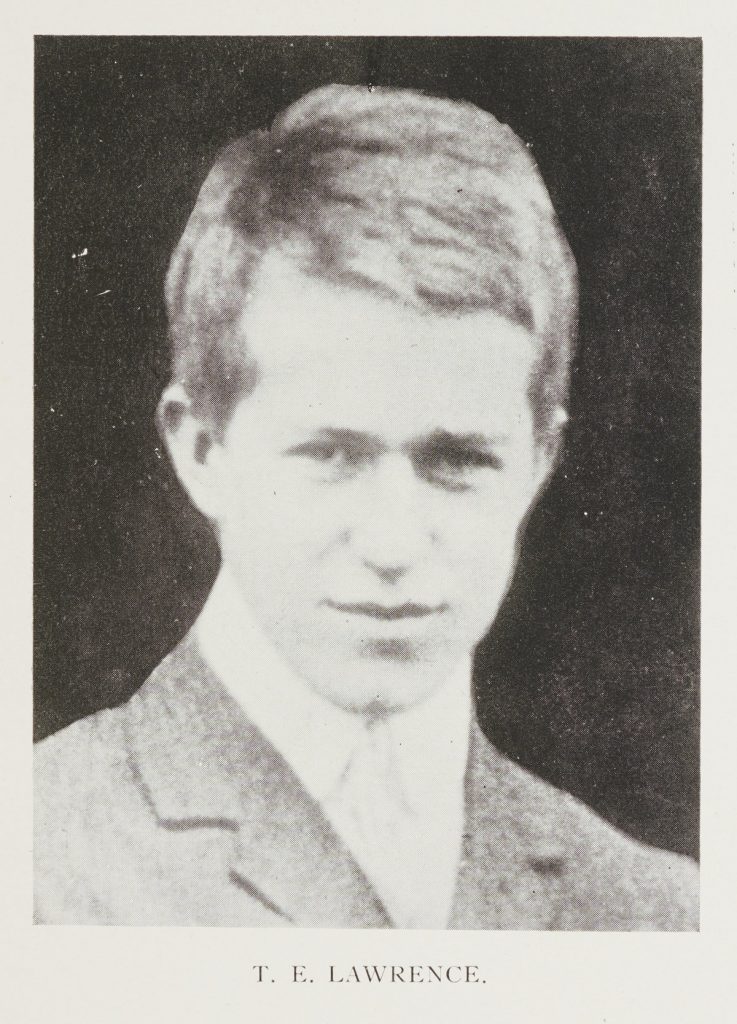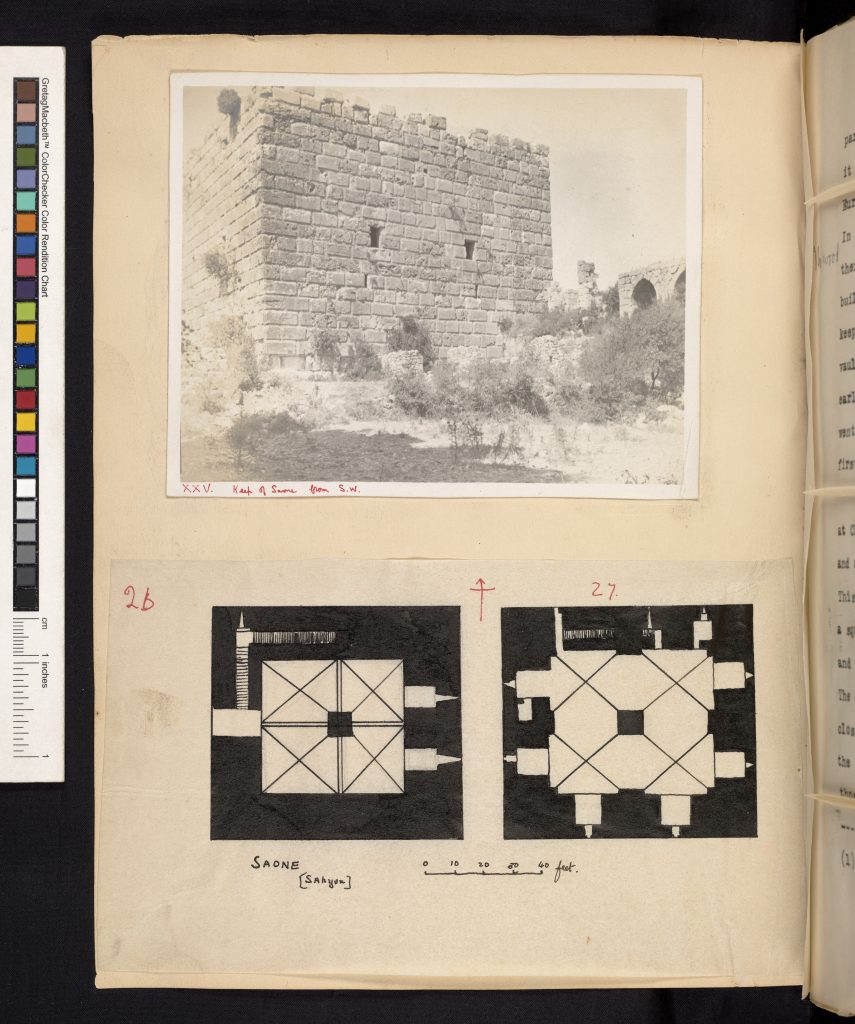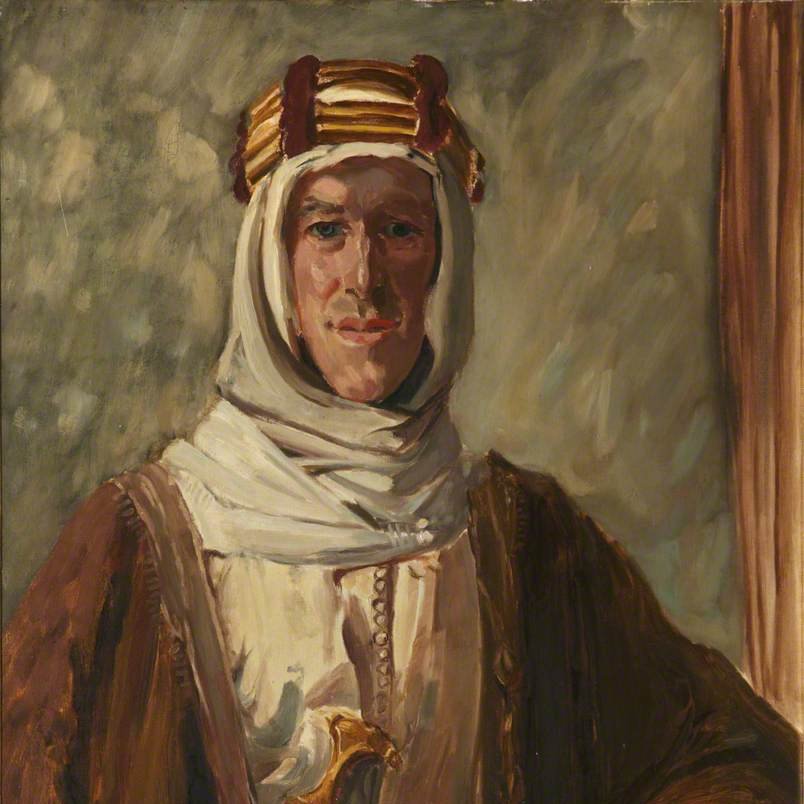The original version of the well-known and highly-regarded dissertation written by Thomas Edward Lawrence (1888–1935) – later known as ‘Lawrence of Arabia’ – and submitted before his History finals at Jesus College in 1910, has been published digitally in full for the first time.
The publication is thanks to a collaboration between Jesus College and Digital Bodleian, which makes digitized content from the Bodleian Libraries’ extraordinary and rich collections accessible to audiences across the globe via a single online portal. It also hosts material from the libraries and archives of several Oxford colleges.
Lawrence’s dissertation, entitled ‘The influence of the Crusades on European military architecture to the end of the twelfth century’, was the product of a remarkable research expedition he undertook in the summer of 1909. Over the course of eighty-three-days, he covered more than 1,100 miles in what was then Ottoman-controlled Palestine, Syria, and Jordan and explored the surviving remains of close to twenty-five Frankish castles in the region. He walked most of the journey, on his own and with only an old revolver for security.
He was inspired to undertake this mission, in part, by the teaching of the medieval scholar, Reginald Lane Poole (1857–1939), who then held a lectureship at Jesus. Lawrence produced two copies of his dissertation, and both survive. One copy, which may represent a near-completed draft, is now preserved at the Houghton Library at Harvard. The other, owned by Jesus College, was given to the Fellows by Lawrence’s mother after his death in 1935, and is held in the care of the Bodleian Library.
The thesis was finally published in 1936, and first photographed by Scriptura of Oxford in 2010. However, the original typescript, which includes drawings, photographs and hand-written notes by Lawrence has never been publicly-accessible until now.
The complete digitisation of the dissertation will enable both Lawrence scholars and historians across the globe to fully explore a work that marked the first significant contribution to the study of the Frankish conquest, control, and exploitation of the Middle East in the central middle ages since the 1870s. It also represents a fascinating insight into the formation of one of the most important figures in the struggle for Arab independence.
Following the adoption of a new Creative Commons licence, digital images from the thesis will be free to access via Digital Bodleian, and can be downloaded and reused provided that Jesus College is credited.
Jesus College Librarian Owen McKnight says, “We are delighted that this new digital version of Lawrence’s dissertation is now online, and available to be read and studied by the widest possible audience. Making this publication accessible for learning, teaching and research purposes will also inspire a new generation of historians, explorers and Lawrence enthusiasts.”
Owen adds, “Jesus College is extremely proud of its famous alumnus, one of many Jesus graduates who have gone on to live noteworthy lives and make their mark on history, society and culture. Lawrence’s portrait rightly hangs alongside kings, queens and our greatest benefactors in our Elizabethan dining hall, while his student bedroom is now known as the TE Lawrence Room and enjoyed as a meeting space by College members and visitors. We also hold a detailed replica of the dissertation in our 17th-century Fellows’ Library,”
Lawrence’s dissertation is now available to view on Digital Bodleian here. You can also read more about TE Lawrence’s time as an undergraduate at Oxford here.




